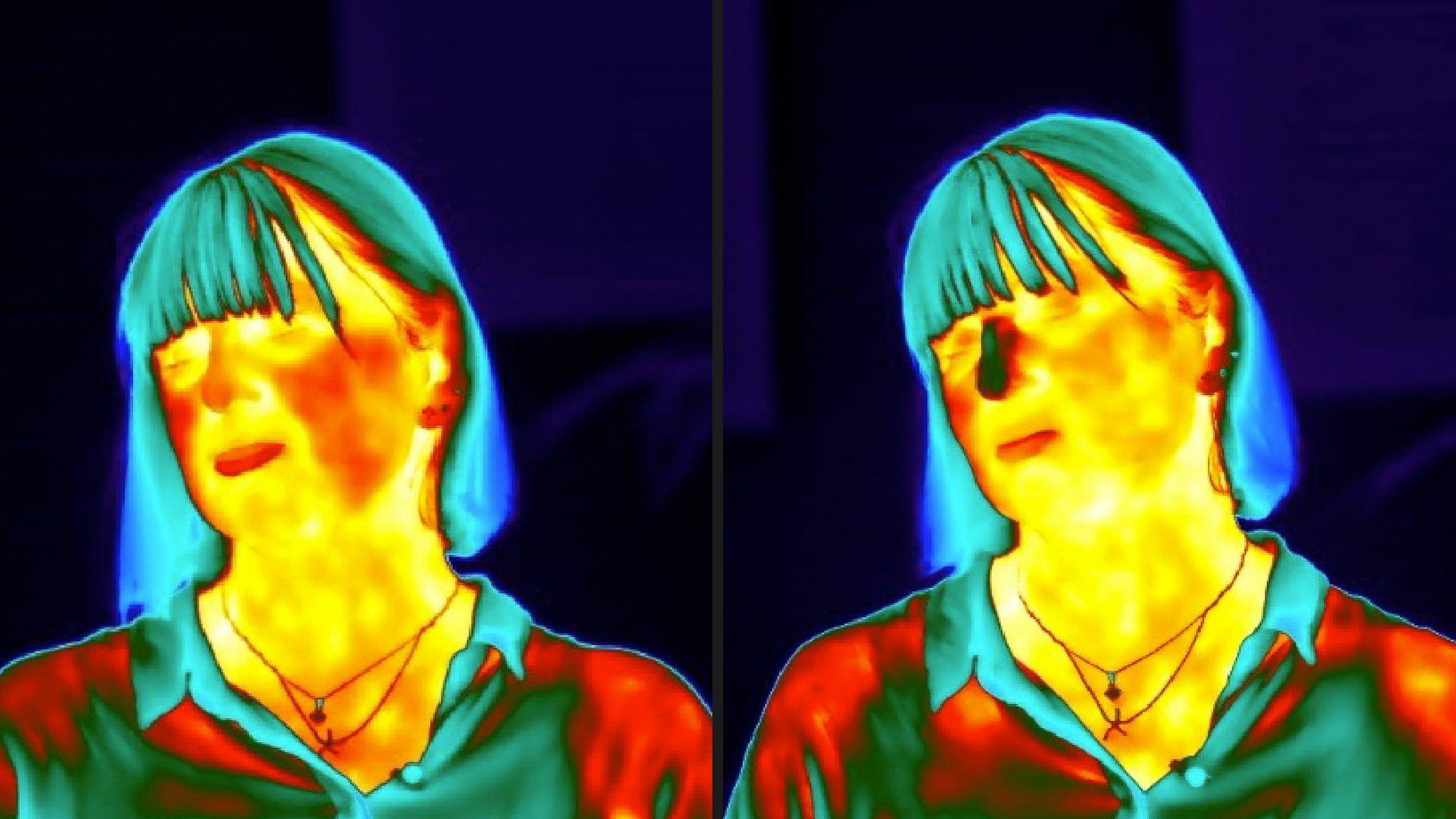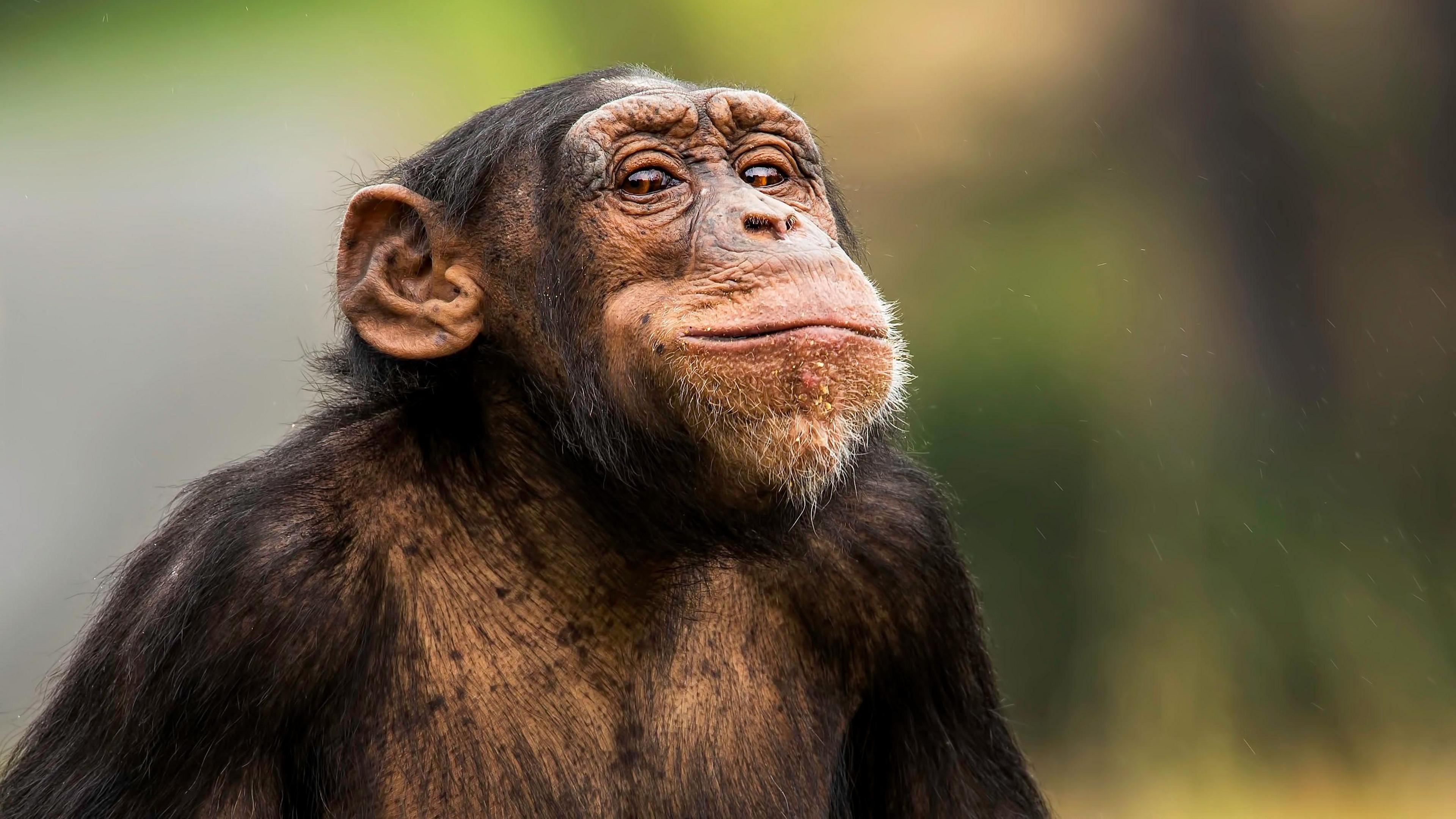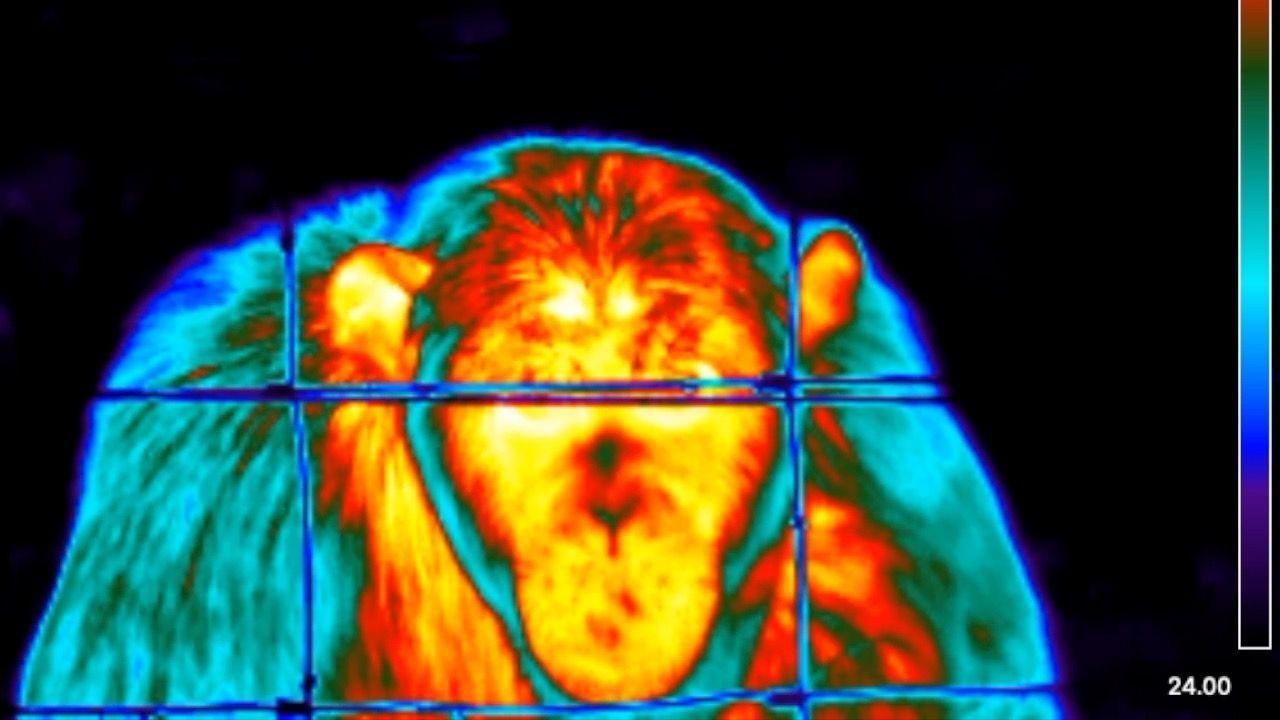Why your nose gets cold when you are stressed
Watch BBC Science Correspondent Victoria Gill put herself through a thermal imaging stress test - the red, orange and yellow areas are hotter, blues and greens are colder
- Published
According to new research from the University of Sussex, having a cold nose could show that you're stressed.
Researchers put volunteers in stressful situations, then used a thermal camera to see how their body temperature changed.
The results showed that their noses dropped in temperature from between three and six degrees Celsius, which showed up blue on the camera.
The scientists discovered that the temperature change can be used as a measure of stress levels, which could help both humans and apes.
- Published18 November 2021
- Published25 February 2021

The temperature drop in the nose, seen in the thermal image on the right, happens because stress affects our blood flow
The BBC's Science Correspondent, Victoria Gill, was asked to do stressful things like mental maths with people watching her, and make a five minute speech with only three minutes to prepare.
In these scenarios her nose turned blue, as you can see in the picture above.
That's because Victoria's nervous system pushed blood flow away from her nose and towards her ears and eyes, which is a physical reaction to help her look and listen for danger.
Lead researcher, Prof Gillian Forrester, says it's a "biological blood flow shift".
While stress is a part of life, the scientists hope that their discovery can help people to manage harmful stress levels.
How can this help anxious apes?

The research can also be used to look at stress in animals, particularly apes - like chimpanzees and gorillas - that are closely related to humans.
The researchers are currently developing thermal cameras for use in sanctuaries that look after great apes, to try and reduce stress and improve their wellbeing.
They have already found that showing adult chimpanzees videos of baby chimpanzees has a calming effect.
They know this because the thermal camera showed the noses of the animals watching the video, warm up.

Chimpanzees and gorillas in sanctuaries may have come from stressful backgrounds
This research is important as some apes in sanctuaries come from distressing backgrounds, so knowing what soothes them can help humans make sure they settle in.
According to Marianna Paisley, one of the researchers, apes are so clever they can actually hide how they are really feeling.
"They can't say how they're feeling and they can be quite good at masking how they're feeling."
So by using thermal imaging, Marianne thinks we could "use that and give back to them".
